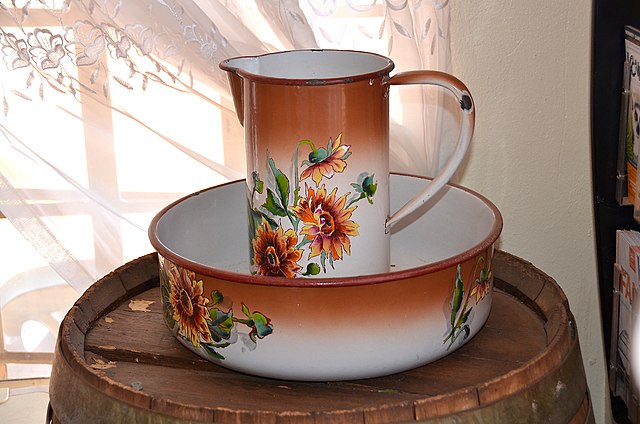A sink is a bowl-shaped plumbing fixture for washing hands, dishwashing, and other purposes. Sinks have a tap (faucet) that supply hot and cold water and may include a spray feature to be used for faster rinsing. They also include a drain to remove used water; this drain may itself include a strainer and/or shut-off device and an overflow-prevention device. Sinks may also have an integrated soap dispenser. Many sinks, especially in kitchens, are installed adjacent to or inside a counter.
A sink/basin in a bathroom
Enamel washbowl and jug
Sink in Croatian National Theater in Zagreb, Croatia
Woman washing at a water basin (louterion). Side B from an Ancient Greek Boeotian red-figure bell-krater, 450–425 BC. From Boeotia.
A plumbing fixture is an exchangeable device which can be connected to a plumbing system to deliver and drain water.
A water outlet
This drain cover has a container underneath (which can be taken out for cleaning and revealing another container below) acting as a trap. Water inside the container forms a seal when the cover is in place. Positive air pressure will push the cover up, acting as an early warning device. The underside of the cover (centre image) is kept moist by condensation occurring and insects that go back up the drain pipe get stuck to the walls of the cover.
Sensor operated plumbing fixtures have fewer moving parts, and therefore outlast traditional manual flush fixtures. Additionally, they reduce water consumption by way of intelligent flushing schedules (fuzzy logic) that determines the quantity of each flush based on how many people are standing in line to use the fixture.
A wall-mounted shower sensor








